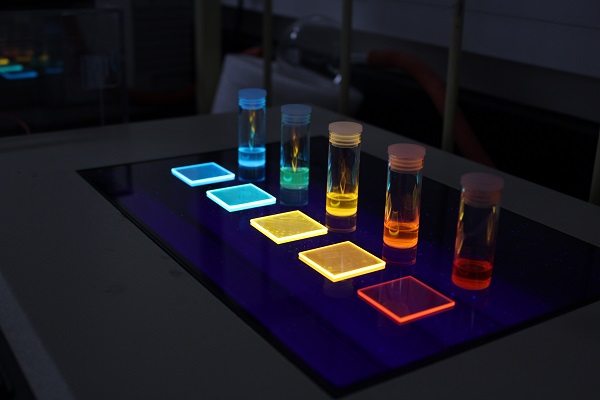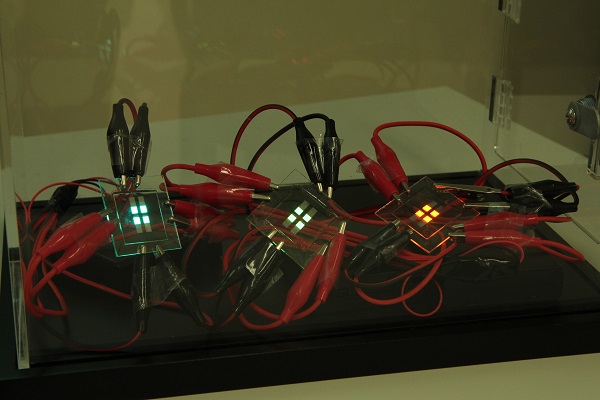Recent advances in the design of high-performance phosphorescent emitters have
led to the leap-forward development of organic light-emitting devices (OLEDs) and their applications in commercial electronic products, including computer monitors, cellular phones, and high-density televisions. Nowadays, almost all commercially available OLED materials are iridium(III) phosphors, with most of the key patents held by foreign countries, including US and Europe. This currently takes up more than 90 % of the OLED market, and the industry usually needs to pay high licensing fees for mass production.
 |
|
(Image: The University of Hong Kong) |
With the funding support of RGC Theme-based Research Scheme, a multi-institutional team that integrates multi-disciplinary efforts from the University of Hong Kong (HKU), the Hong Kong University of Science and Technology (HKUST), Hong Kong Baptist University (HKBU), the Hong Kong Polytechnic University (PolyU) and City University of Hong Kong (CityU), and the complementary expertise of chemists, physicists, materials scientists, and device engineers has been established to address the grand challenges related to energy.
Particularly, Professor. Vivian W.W. Yam and Professor C.M. Che from HKU are responsible for the design and synthesis of highly efficient phosphorescent materials; Professor F.R. Zhu from HKBU and Professor K.M. Ng from HKUST are responsible for the development of high-performance organic solar cells; Professor H.S. Kwok from HKUST and Professor C. Surya from PolyU are responsible for the development of industrial-competitive technologies for large-area devices; while Professor C.S. Lee from CityU is responsible for the interfacial and dynamic studies.
 |
|
(Image: The University of Hong Kong) |
With the dedicated efforts of the team during these five years, a significant impact to the fields of OLEDs and organic photovoltaics (OPVs) has been made. Especially, the team has tackled the challenges for commercialization with the generation of more than 260 high-impact publications, Hong Kong-owned intellectual rights, patents and technological know-how that are industrial-competitive.
Specifically, exceptional performance has been demonstrated in the development of robust phosphorescent OLED materials. Various new classes of vacuum-deposited and solution-processable OLED materials have been generated, and highly efficient OLED devices with specifications meeting the industrial standards, including high external quantum efficiencies, extremely small efficiency roll-offs, and long operational lifetimes, have been realised. These superior performances have attracted a lot of interests from industry.
 |
|
(Image: The University of Hong Kong) |
Notably, strong collaborative links with renowned industrial partners have been in place for the establishment of a joint laboratory and the execution of collaborative projects for the development and identification of promising OLED materials for large-scale production. An exclusive license agreement on OLED material patents has also been executed with one of the world’s leading OLED display manufacturers. The licensing is anticipated to realise next-generation OLED technologies based on our proprietary metal complexes. New classes of high-performance photoactive materials and novel device architecture for high-performance OPVs have also been developed. Particularly, with the aid of a deep understanding of interfacial and dynamic properties, the team has developed various convenient and cost-effective techniques and technological know-how that can be easily adopted for applications in large area and flexible OPV devices. The success of this project not only can provide a strategic alliance for multi-disciplinary research collaboration towards the demonstration of superior technology with world-class standard, but also facilitates technology transfer and collaboration with industries, motivating downstream R&D and commercialization activities in Hong Kong, the Mainland and in the international arena.











